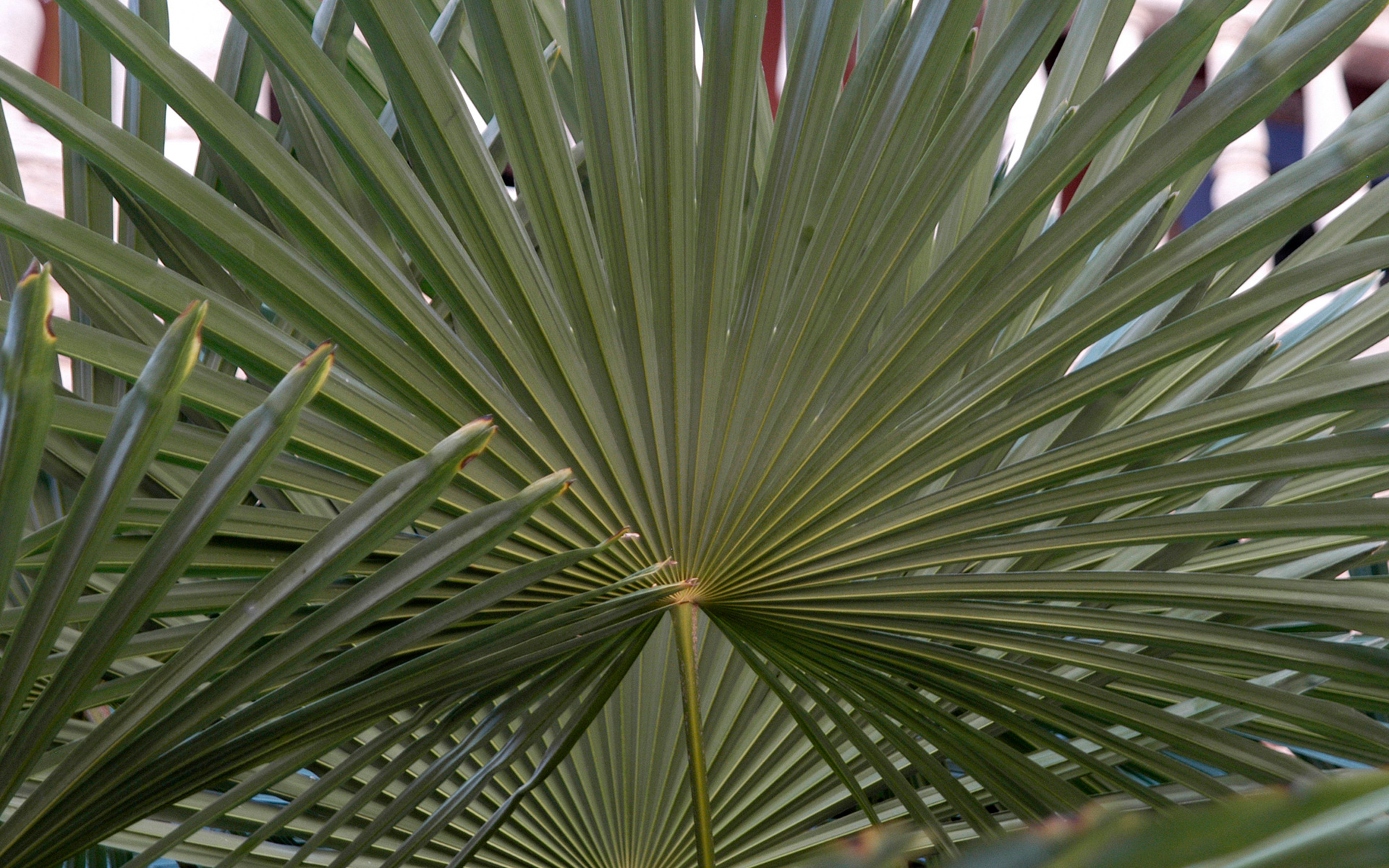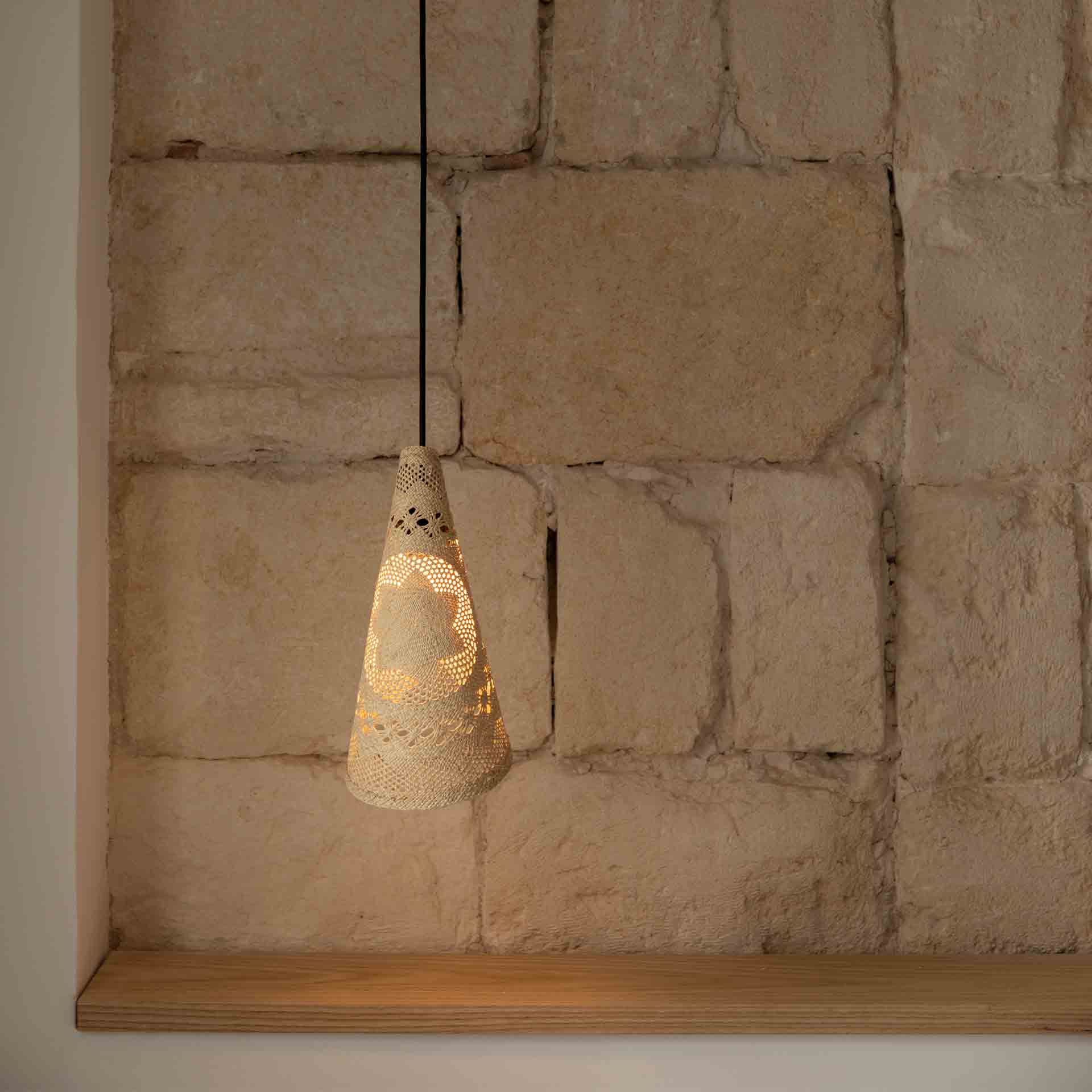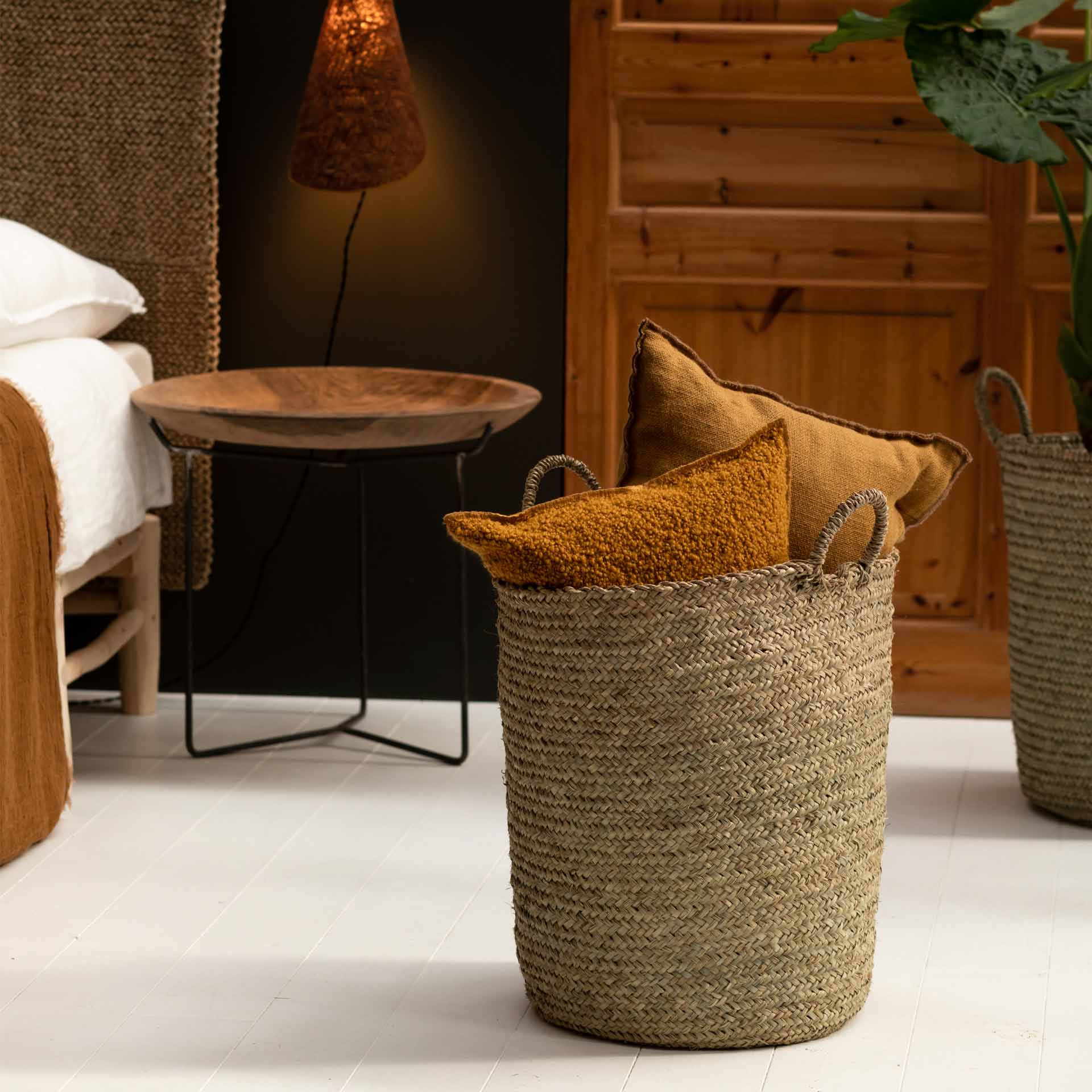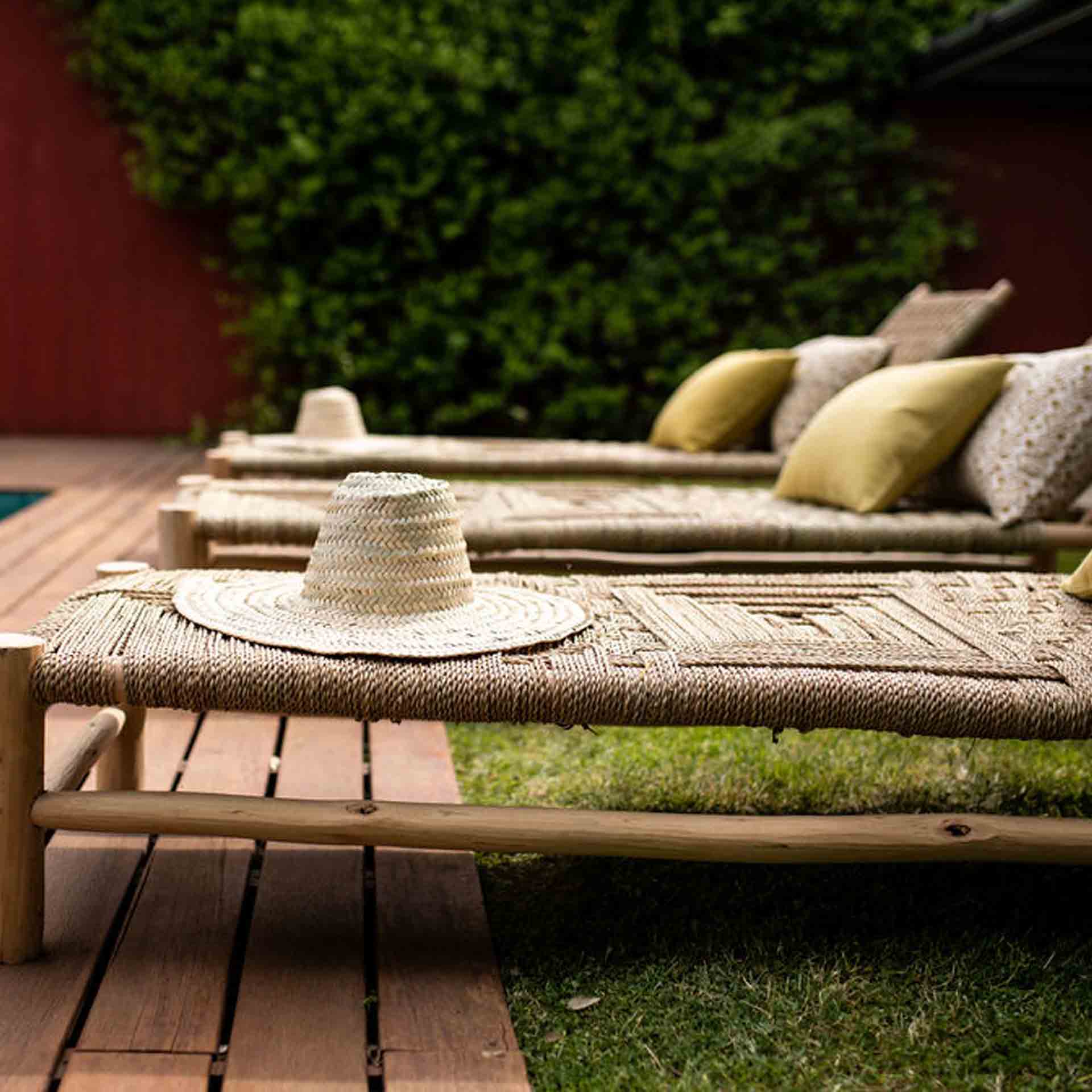Palm leaf(Chamaerops humilis)
Dwarf palm, fan palm, mini-palm. Different names referring to the same thing: the palm. Essentially a humble plant, not featured nearly as much as other materials for interior décor. And maybe that’s why we like working with it. An native species of plant to Europe that thrives in calcareous lands, with the breeze off the sea, the intense sun of midday; pure Mediterranean in character.
Difficult to domesticate but equally versatile and generous if you know how to work it.
The palm leaf is easy to spot. Large leaves and end in a sharp point that grow from a fan-shaped stem. It’s a species of palm that cannot be cultivated. To be able to appreciate its beauty we have to be patient; and wait till the end of the summer before going out to look for its leaves that grow in the wild. More than simply collecting the leaves it involves a precise craft, the preparatory work before the complex skills required to work with it.
Step by step, leaf by leaf
Transforming palm leaves isn’t a straightforward task. It’s important to know the steps to take; particular skill is required for each of them. Our craftsmen have seen how their predecessors worked it and have learned over time to perfect the technique. Rugs, screens, plate mats, bottle holders, panniers and baskets, mirrors. Only after acquiring years of experience is it possible to exploit the palm leaf’s great versatility.
Natural Handmade Furniture is not a label; It is our philosophy of life. That is why we do not apply any artificial treatment to our products.

Each Let’s Pause creation merges with nature at the end of its useful life. Because our essence is the commitment to the Earth, and to the future of people.
un proceso artesanal
Collection
The palms are cut with a short sickle made especially for the job. They are heaped together and tied in sheaves for transportation. Then they are spread out under the sun to dry and loose their green colour to later on become the more characteristic straw shade.
Getting back its elasticity
The drying of the leaves makes working them almost impossible, they break when woven. So they are blanched to give them back their elasticity.
The STRANDS are a blank canvas for creating
o get the right leaf for the weave you need to cut the pieces of the stem that support the layered leaves (foliole or leaflet). Then the leaves have to separated, one by one. When they are separated out only some are used. The most beautiful ones will become STRANDS, the raw material that is woven into the products.
Weaving
The strands are braided together to form ropes of different centimetre widths depending on the pieces in question. These SLATS must be dried by the sun over a few days till they are ready for sewing.
Sewing
The last step, and the most delicate, is the one that needs experienced and expert hands. This is where the craftsmanship comes into its own; recorded forever more in the objects that are sewn by hand.
 Pluma
Pluma Gelida Basket
Gelida Basket Amoreira
Amoreira Macarella
Macarella